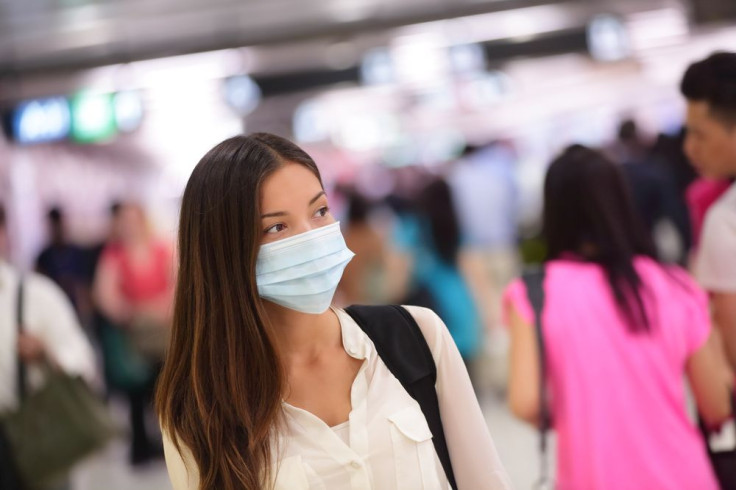Does Wearing A Surgical Mask During Flu Season Really Prevent You (Or Those Around You) From Getting Sick?

A stranger in a surgical mask is a clear sign that flu season has arrived. It starts off slow — first a person riding the subway, a couple holding hands walking down the road. But as winter takes full effect, the masked population begins to increase. While these masks certainly seem like solid lines of defense against sickness, is wearing surgical masks one of the most important things you can do for your health, or are they simply a waste of money?
Location, Location, Location
For the record, according to the Centers for Disease Control and Prevention, the best protection against the flu is the flu vaccine (although this doesn’t seem to be the case in this year’s flu epidemic). Washing your hands frequently also offers indisputable protection against contagions. However, just because the surgical mask may not offer the best protection against the flu and other airborne diseases, this doesn’t necessarily mean that it doesn’t offer any protection. The face mask can be either highly effective or pretty much useless, all depending on where it’s worn and what you’re protecting either yourself or others from.
The face mask is highly effective in preventing the transmission of disease when used inside of hospitals or other health care settings, The New York Times reported. Also, the mask works well in home settings where an infected individual is living in close proximity to uninfected family members. A 2008 study found that when used correctly those living with a sick family member were 80 percent less likely to be diagnosed with the illness.
It’s when people wear these masks in other locations that protection starts to waver and, frankly, the CDC is not quite clear what goes on when these masks are worn outside of health facilities. In a recent report on the subject, the organization wrote that “very little information is available about the effectiveness of facemasks and respirators in controlling the spread of pandemic influenza in community settings.”
Avenue Of Transmission
The mask’s effectiveness is also heavily dependent on how the illness is transmitted. For airborne viruses and bugs expelled from the body in large droplets, the mask may be your best bet. The trouble is, the flu and other ailments aren’t only spread in this manner. One study found that 65 percent of viruses spread among flu patients consisted of small particles. Unfortunately, the generic face mask is not airtight and cannot offer protection against these smaller particles. That means that if a sick person sitting next to you coughs, you can catch their ailment regardless of if you’re wearing a mask or not.
The CDC wrote in its H1N1 flu advisory that “facemasks help stop droplets from being spread by the person wearing them. They also keep splashes or sprays from reaching the mouth and nose of the person wearing them. They are not designed to protect against breathing in the very small particle aerosols that may contain viruses.”
Also, the CDC reminds us that the flu’s most effective avenue of transmission is not the air but via direct contact with an infected individual. For example, drinking from a glass that was shared with a sick person, or touching your mouth after touching a surface also touched by a sick individual is not only more likely to get you infected but is something the mask offers absolutely no protection against.
All Is Not What It Seems
When we see someone in public wearing a facemask, our first thought may be that he is taking precaution. In reality, however, there are a number of reasons why these individuals may be sporting the latest item in hospital couture. You may be silently judging that individual in a surgical mask on the subway as being a hypochondriac. However, JapanToday reports that, in Japan at least, most times the mask is actually worn in protection for the public, not against. For example, in the island nation it’s common courtesy for individuals feeling under the weather to sport a surgical mask in an effort not to infect those around them. Also, certain masks are actually designed not to keep germs out but to keep pollen at bay.
Due to the longstanding history Japan has with the surgical mask, the item has lost the alarming factor that it may cause in those living in other countries. For this reason, some people have implemented the masks for completely non-medical reasons. For example, Japanese women reportedly admit to throwing on the mask to cover up their faces when they don’t feel like wearing makeup. Also, one woman told JapanToday that her daughter used the mask as a way to ward off unwanted conversations on public transportation.



























